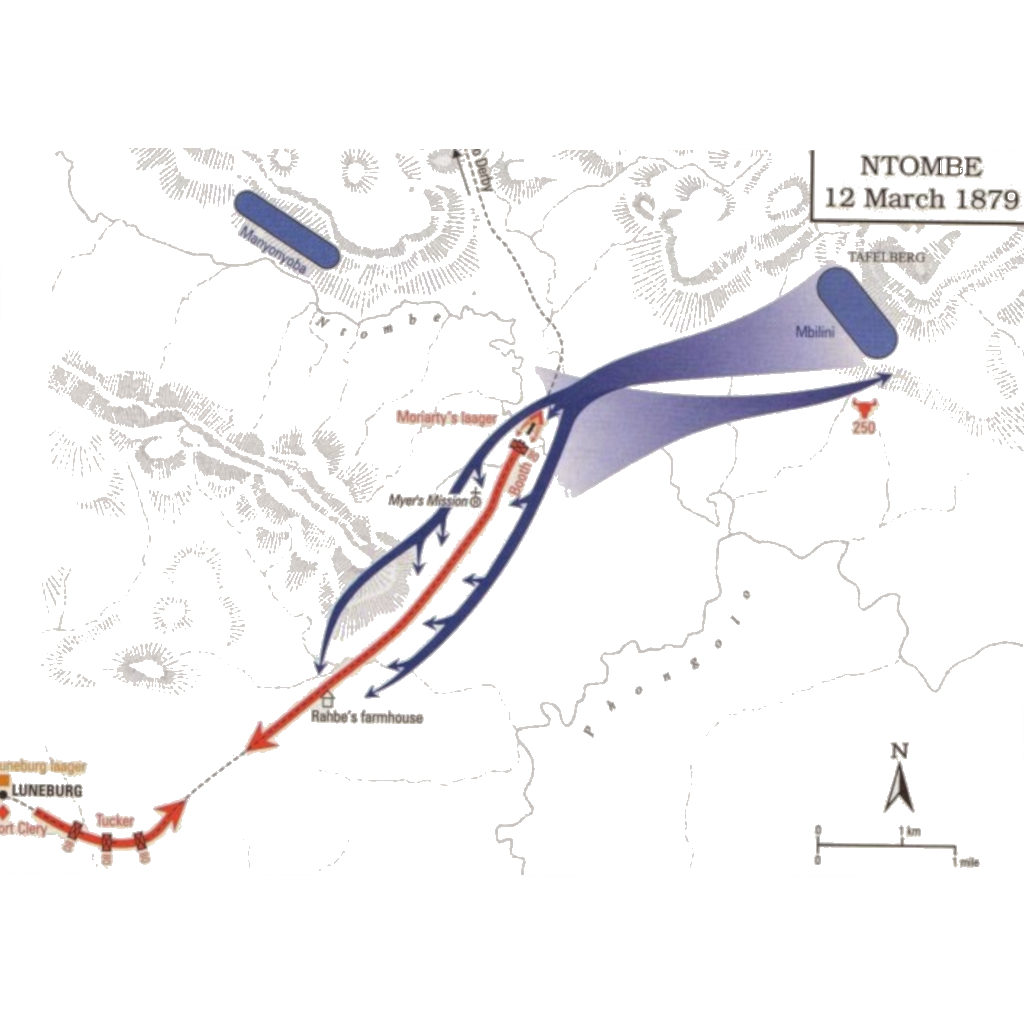The Battle of Intombe took place on 12th March 1879, during the Anglo-Zulu War. It was a small but significant engagement fought on the right bank of the Intombe River in Zululand.
The battle involved a British supply convoy en route to the village of Lüneberg, which had been fortified by its settlers due to the ongoing war. The convoy, consisting of 18 wagons carrying 90,000 rounds of ammunition and other supplies, was ambushed by Zulu forces led by Prince Mbilini waMswati.
The British troops, numbering 104 men under the command of Captain David Moriarty, were caught off guard as they attempted to laager (park close together for defense) their wagons. The Zulu forces, estimated to be between 500 and 800 warriors, launched a surprise attack in the early hours of the morning, using the cover of mist to their advantage.
Despite the British defenders’ efforts to hold their ground, the Zulus overwhelmed them, resulting in heavy casualties. Captain Moriarty and many of his men were killed in the initial assault. A small number of British troops managed to escape across the river and join a small party already stationed on the opposite bank. These survivors, led by Colour-Sergeant Anthony Booth, formed a square and conducted an orderly retreat, eventually reaching safety at Lüneberg.
The Battle of Intombe was a Zulu victory, with British casualties estimated at 62-80 killed and 30 wounded. The Zulu forces suffered about 30 casualties. The engagement highlighted the vulnerability of British supply convoys and the effectiveness of Zulu tactics in ambush situations.
Orders of Battle
British Orders of Battle
- British Commander-in-chief
- Captain D. Moriarty
- No. 5 Column (detachment)
- 1 x Company 80th (Staffordshire Volunteers) Regiment of Foot
Zulu Orders of Battle
- Zulu Commander-in-chief
- Prince Mbilini kaMswati
- abaQulusi
Download This Scenario
How it Played
Sources
Other blog categories that may be of interest. 10mm ACW Project, 10mm AWI Project, 10mm AZW Project, 10mm CGW Project, 10mm FIW Project, 10mm Sci-Fi Projects, Aliens, Dropzone Commander, Terra Nova, 10mm WWI Project, 10mm WWII Project, 10mm Zombie Project, Battle Reports & Scenarios, Making Scenery & Terrain, Painting Guides, Shows & Events, Solo Wargaming, Wargaming Projects, Wargaming Rules.


Leave a Reply